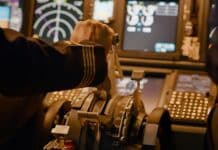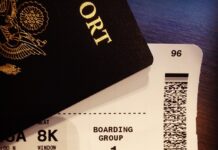It was expected but it is now official: the A380’s career at Air France is coming to an early end. The airline has just made official in a terse press release what was no secret to anyone.
“In view of the COVID-19 crisis and its impact on forecasted activity levels, the Air France-KLM Group today announces the definitive cessation of Air France’s Airbus A380 operations.
Initially scheduled for the end of 2022, the withdrawal of the Airbus A380 fleet is part of the Air France-KLM group’s strategy to simplify its fleet and make it more competitive by continuing its transformation with more modern, more efficient aircraft with a considerably reduced environmental footprint.
Five of the Airbus A380s in the current fleet are owned or leased by Air France, the other four are on operating lease. The overall impact of the impairment of the Airbus A380 fleet is estimated at EUR 500 million and will be recognised in the second quarter of 2020 in non-current income.
The Airbus A380s will be replaced by new generation aircraft, such as the Airbus A350 and Boeing 787, which are currently being delivered.”
The A380: a great idea but a casting error
It was known that the A380 would not have a long career since the end of the programme was announced a year ago. From then on, it remained to be seen how quickly the aircraft currently in use would end their careers. For Air France, the time of retirement had been set for 2022, but the COVID-19 killed the air giant. Not profitable enough, it was already a burden in normal times, today it is an unbearable burden for an airline like Air France. Let’s bet that other airlines will quickly make similar announcements, starting with Lufthansa. Even Emirates has enacted the end of the 380, which makes up the bulk of its fleet and of which it is the largest operator. It remains to be seen how and when.
A disappointment but a surprise to no one. The very nature of the A380 made it an aircraft for airlines that did high volumes of long haul around a hub and operated a large number of them. An ideal machine for Emirates, a casting error for others.
The seed of the A380’s demise was planted when it had not yet made its first commercial flight! When it was conceived and made its first test flight, it was not possible to fly more than 3 hours from the coast with a twin-engine aircraft, which justified the launch of four-engine aircraft such as the A380 or a new generation of B747. In 2007, when he started his commercial career, the 3-hour barrier fell to 4, then 5, then 6 and now 7 hours. From then on, the four-engine jet no longer made sense from an economic point of view, and when we see that a 777-300ER carries almost as many people as a 380 but with greater economic efficiency, the die was cast. It was not the price of fuel that killed the A380 but the ETOPS standard.
The A380 a liability for Air France
For Air France the A380 had several problems. Its operating cost, as we have seen.
Then there were too few aircrafts to really develop a strategy around it. As the CEO of Emirates said, you either order a minimum of fifty A380s (as Air France did with the B777, of which it is a major consumer) or you don’t order any. From this point of view, the European airlines (and not only Air France) gave the impression of playing the A380 card more out of European solidarity than business strategy. It never does any good. Because the truth is that they didn’t need it.
Then came Air France’s original sin, a crime against both the aircraft and the customers! Instead of making it a flagship with a new generation cabin, Air France equipped it with an outdated cabin, still in use today. The aircraft had no product appeal except to those who rarely flew and were still dreaming about it. But when frequent flyers avoid an aircraft it is never a good sign. When savvy passengers consider its business and First to be the worst in the fleet, it’s a disaster for an aircraft that’s supposed to convey the airline’s image.
The cabin upgrade has been repeatedly postponed because the cost to the airline’s finances is too high given the aircraft’s profitability. It was time to end the ordeal.
For a long time we thought that if the people in charge of the product at that time had been competent (the same people who launched a “Toboggan” seat when the whole sector – or almost – was going full-flat) the aircraft could have lasted a few more years and remained attractive, but today there are no regrets and Air France has made the right choice for its survival and in all coherence with the the ongoing rationalisation of its fleet.
A successor that will be long in coming and so much the better
As the saying goes, every cloud has a silver lining. Beyond the judicious idea of stopping the operation of the A380, we were still worried about seeing only orders for A350s and 787s. While these aircraft cover a large part of the need, with the release of the 380 and the first 777s starting to age, there was still the question of the medium-term renewal of large-capacity aircraft, or at least part of them.
Given the context, there is suddenly much less urgency about this.
Travel enthusiasts and fans of beautiful aircraft will miss the A380. At Air France, financiers are probably less likely and frequent flyers less likely, even if it’s not for the same reasons.
Photo : A380 Air France by Lukas Wunderlich via Shutterstock





















